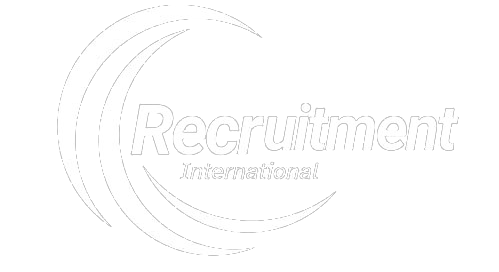Creating Engaging Job Descriptions: Crafting Compelling Content to Attract Candidates
Creating Engaging Job Descriptions
In the competitive landscape of talent acquisition, job descriptions serve as the first point of contact between organizations and potential candidates. A well-crafted job description not only outlines the responsibilities and requirements of a role but also showcases the company’s culture, values, and unique selling points. To attract top talent, organizations must focus on creating job descriptions that are engaging, informative, and tailored to the needs and aspirations of today’s job seekers.
Understanding the Importance of Job Descriptions
Job descriptions play a crucial role in the recruitment process, serving as a marketing tool to attract qualified candidates. They provide candidates with essential information about the role, including responsibilities, qualifications, and expectations. However, job descriptions are more than just a list of duties; they represent an opportunity for organizations to convey their employer brand and create a positive first impression on potential hires.
The Impact of Engaging Job Descriptions
Engaging job descriptions can significantly impact an organization’s ability to attract top talent. By highlighting the company’s culture, values, and benefits, job descriptions can resonate with candidates on a personal level, increasing their interest in the role and the organization. Additionally, well-crafted job descriptions can help organizations stand out in a crowded job market, positioning them as employers of choice for desirable candidates.
Key Elements of Engaging Job Descriptions
1. Clear and Concise Job Titles
The job title is the first thing candidates see when browsing job descriptions, so it’s essential to make it clear and descriptive. Avoid using internal jargon or vague titles that may confuse candidates. Instead, use concise language that accurately reflects the role and its level within the organization.
2. Compelling Job Summaries
The job summary serves as the elevator pitch for the role, capturing the candidate’s attention and providing an overview of the position’s key responsibilities and objectives. Use this section to highlight the most exciting aspects of the role and the impact it will have on the organization. Keep it concise yet compelling to encourage candidates to read further.
3. Detailed Responsibilities and Requirements
Provide a comprehensive list of the role’s responsibilities and requirements, ensuring that candidates have a clear understanding of what is expected of them. Use bullet points to break down the information and make it easy to read. Be specific about the skills, experience, and qualifications required for the role, but also be open to candidates from diverse backgrounds who may bring unique perspectives and abilities to the table.
4. Showcasing Company Culture and Values
Job descriptions are an opportunity to showcase the company’s culture, values, and employer brand. Incorporate language that reflects the organization’s mission, vision, and core beliefs. Highlight any unique benefits or perks offered to employees, such as flexible work arrangements, professional development opportunities, or a supportive company culture. This will help candidates envision themselves as part of the organization and align their values with those of the company.
Crafting Compelling Job Descriptions
1. Use Engaging Language
Use language that is engaging, inclusive, and reflective of the organization’s culture. Avoid jargon or overly formal language that may alienate candidates. Instead, opt for a conversational tone that speaks directly to the candidate and highlights the excitement and opportunities associated with the role.
2. Incorporate Visual Elements
Visual elements such as images, videos, or infographics can make job descriptions more visually appealing and engaging. Use these elements to showcase the company’s workplace environment, team dynamics, or company events. Visual content can help candidates visualize themselves in the role and get a sense of the company’s culture and values.
3. Highlight Career Growth Opportunities
Candidates are often looking for opportunities for career growth and development. Highlight any opportunities for advancement within the organization, such as mentorship programs, training initiatives, or career progression paths. Emphasize the organization’s commitment to employee development and encourage candidates to envision a long-term career with the company.
4. Encourage Two-Way Communication
Encourage candidates to engage with the job description by including a call to action that invites them to apply or learn more about the role. Provide clear instructions on how to apply, including any required documents or materials. Additionally, provide contact information or a link to the company’s careers page where candidates can find more information about the organization and its culture.
Conclusion
Crafting engaging job descriptions is essential for attracting top talent and building a strong employer brand. By focusing on clear and concise language, showcasing the company’s culture and values, and highlighting opportunities for career growth, organizations can create job descriptions that resonate with candidates and encourage them to apply. By investing time and effort into crafting compelling job descriptions, organizations can attract qualified candidates who are aligned with their values and goals, ultimately leading to a more productive and engaged workforce.
Frequently Asked Questions (FAQ) about Creating Engaging Job Descriptions
Q: Why are job descriptions important in the recruitment process?
A: Job descriptions serve as a critical tool in the recruitment process by outlining the responsibilities, requirements, and expectations of a role. They provide candidates with essential information about the position and help organizations attract qualified candidates who are the right fit for the role.
Q: What makes a job description engaging?
A: Engaging job descriptions are those that go beyond listing duties and requirements; they also showcase the company’s culture, values, and unique selling points. Using engaging language, incorporating visual elements, highlighting career growth opportunities, and encouraging two-way communication can make job descriptions more compelling to candidates.
Q: How can I craft a compelling job description?
A: To craft a compelling job description, focus on clear and concise language, use engaging language that reflects the organization’s culture, incorporate visual elements such as images or videos, highlight career growth opportunities within the organization, and encourage two-way communication by including a call to action for candidates to apply or learn more about the role.
Q: What are the benefits of creating engaging job descriptions?
A: Creating engaging job descriptions can attract top talent, enhance the employer brand, and improve the candidate experience. Engaging job descriptions can also help organizations stand out in a competitive job market, position themselves as employers of choice, and ultimately lead to a more productive and engaged workforce.
Q: How often should job descriptions be updated?
A: Job descriptions should be updated regularly to reflect changes in the organization’s needs, industry trends, and job market dynamics. It’s recommended to review and update job descriptions at least once a year or whenever significant changes occur in the role or responsibilities. Regular updates ensure that job descriptions remain accurate, relevant, and aligned with the organization’s goals and values.







